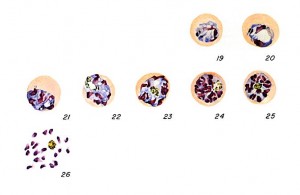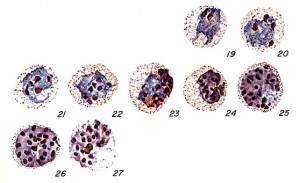QUESTION:
Why is it that people die of malaria?
ANSWER:
The symptoms of malaria are caused by the malaria parasite reproducing inside the patient’s red blood cells and eventually destroying them. In this process, the malaria parasites also produce toxic waste chemicals and debris which build up in the patient’s blood stream. The body produces a strong immune response as a reaction to these toxic products and debris; most of the systemic symptoms associated with malaria, such as fever, aching muscles and joints and nausea, are related to this immune response. Infected red blood cells can also build up in internal organs, notably the spleen and the liver, causing them to swell.
Despite these nasty-sounding effects, most cases of malaria are relatively benign and don’t lead to death. However, in some cases, the manifestation of the disease can become more severe. Most commonly, this occurs when a patient is infected with Plasmodium falciparum, one of the four main kinds of malaria that infect humans, and by far the most severe. P. falciparum reproduces very rapidly in the human host, causing extremely high fever and a fast onset of symptoms. It also changes the structure of the red blood cells it infects, causing them to become “stuck” deep within tiny blood vessels and especially in major organs such as the brain, intestines, liver, heart and lungs. Stuck within these blood vessels, the infected red blood cells are effectively hidden from the immune system and are not cleared from the body via the spleen. This allows the malaria parasite’s reproduction to go unchecked, resulting in very high numbers of the parasite in the patient’s blood.
If left untreated, the build-up of infected red blood cells can result in severe anaemia, reduced local oxygen flow and the blocking of the immune reaction; the exact mechanisms are not fully understood. When these processes occur in the brain, the result is so-called “cerebral malaria”, characterised by impaired consciousness, and which can lead to convulsions, coma and death. Even if a patient recovers from the disease episode, they may be left with permanent neurological damage. Luckily, malarial comas are often rapidly reversed after treatment is administered, and in many cases, neurological damage is not permanent.

